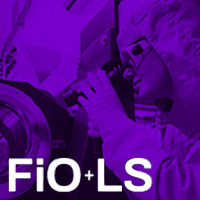Abstract
The adaptive optics scanning laser ophthalmoscope (AOSLO) combines an ophthalmic adaptive optics system [1] with a confocal scanning laser ophthalmoscope [2]. Adaptive optics (AO) are used to overcome blur in retinal images that is caused by aberrations in the cornea and lens of the eye. By using adaptive optics, microscopic retinal features are visualized [3]. 30 frame-per-second imaging has revealed the flow of individual leukocytes in the smallest retinal capillaries. The increased optical sectioning ability allows for true optical sectioning of retinal layers. The AOSLO uses a 37-channel deformable mirror (Xinetics, Andover MA), combined with a Shack Hartmann wavefront sensor (400 µm lenslets, 24 mm focal length). 512 × 480 pixel images of a 1.5 × 1.4 degree field are captured at 30 frames per second. The imaging wavelength is 660 nm but other wavelength imaging is possible. The AOSLO measures and compensates for the wave aberrations at about 1 Hz simultaneously with image acquisition. Here we describe the latest advances in retinal imaging with the AOSLO instrument.
© 2003 Optical Society of America
PDF ArticleMore Like This
Yuhua Zhang, Jacque L Duncan, Brandon Lujan, and Austin Roorda
FMG1 Frontiers in Optics (FiO) 2006
D. P. Biss, R. H. Webb, Y. Zhou, T. G. Bifano, and C. Lin
FTuY3 Frontiers in Optics (FiO) 2006
C. E. Bigelow, D. X. Hammer, R. D. Ferguson, N. V. Iftimia, T. E. Ustun, B. A. Rockwell, and C. A. Toth
TuI58 Biomedical Topical Meeting (BIOMED) 2006

